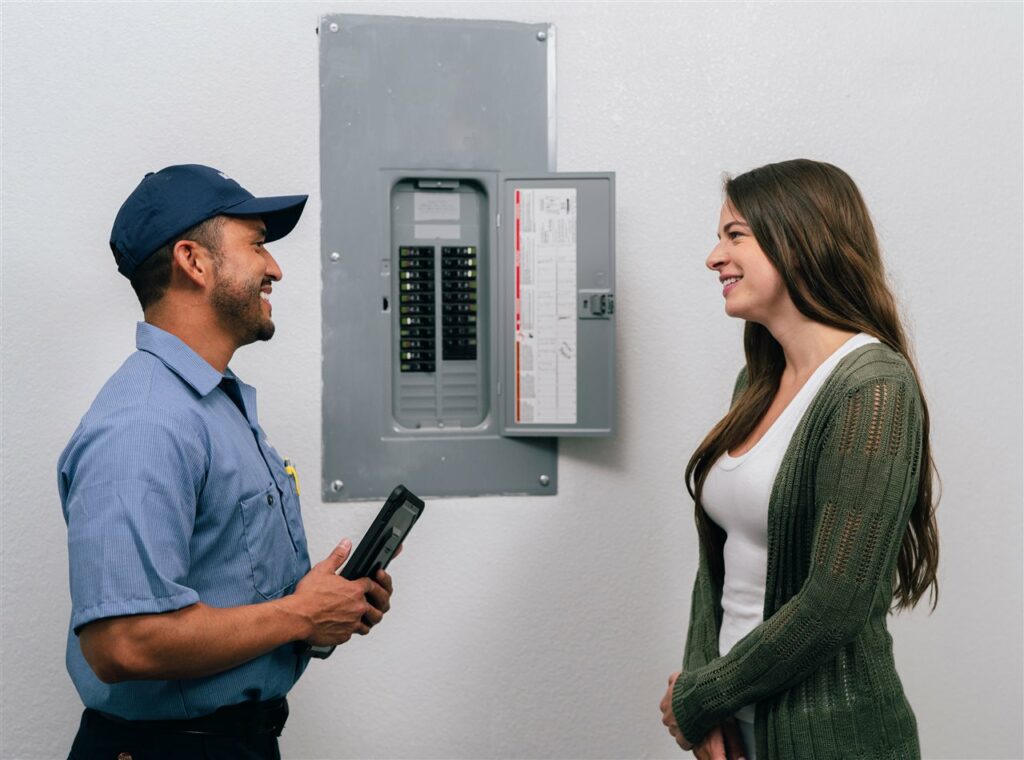Storm season is coming: 5 ways you can protect your home from lightning
Summertime is known for warmer weather, backyard barbecues and fun in the sun. However, it’s also a time when lightning is likely to strike. According to The National Weather Service, about 25 million cloud-to-ground lightning strikes occur in the United States each year and can strike up to 25 miles away from its parent thunderstorm.
The best place to be when a thunderstorm hits is inside your home. But even indoors, lightning can cause damage, especially to your electrical appliances. However, with some preparation, you can reduce the risk of damage should lightning strike.
In honor of Lightning Safety Week, Mr. Electric®, a Neighborly® company — a leading electrical installation and repair franchise — has provided the following five ways to prepare your home for any storms that come your way.
1. Remember to unplug
During storm season, stay alert! If you discover that a storm is coming, you’ll have time to prepare and unplug appliances and devices you won’t need during the storm. Because a lightning storm has the potential to strike the power grid and increase the voltage to your electrical devices, it’s best to take preventative measures and unplug them to protect them and yourself.
2. Invest in whole-home surge protectors
When a sudden increase in voltage occurs, surge protectors can safeguard your electrical devices by redirecting the excess voltage through the house’s grounding path. Prepare your home by investing in whole-house surge protectors to minimize damage to your sensitive electronics and valuable appliances from an electrical surge.
Note: Surge protectors are only effective if your house has proper wiring and grounding. If you aren’t sure your home is properly wired and grounded, contact your local Mr. Electric for a professional assessment. Also, keep in mind that if your home or nearby area is struck by lightning your surge protector is as good as its rated limit or capacity.
3. Familiarize yourself with the circuit breaker
Because electricity is dangerous, it’s important to familiarize yourself with your home’s circuit breakers. A circuit breaker is designed to “trip” or shut off when at a predetermined amperage load. If the limit is reached, the breaker trips and opens the circuit, preventing the flow of current to that particular electrical line or circuit.
Before the next storm hits, take time to learn what each circuit breaker is designed to shut off. If you’re experiencing constant trips, it could be an overloaded circuit, a short circuit or a ground fault, in which case you’ll need to call a professional for help.
4. Have backup power
It’s possible that a storm may knock out your power. If you lose power in your home, it’s a smart idea to have a backup generator to ensure essential appliances keep running while you’re sheltering in place.
You may think you can go without power for a while, but don’t take a chance. Depending on the storm’s severity, you could be left without power for hours or even days. Eliminate the stress of uncertainty by having a backup generator on hand.
5. Schedule an electrical safety inspection
Even minor electrical damage can lead to bigger issues. After a severe weather event, schedule a home electrical safety checkup, so a trusted professional can catch any unseen issues. Visit Mr.Electric.com/Electrical-Services to find and schedule an appointment with an electrical expert in your area.
While you may not have much warning before a storm arrives, you can take steps to ensure the safety of your family and home. Using these five tips, you’ll be prepared for storm season and protect your home and family from unexpected lightning strikes. (BPT)
Susan Brewer Service First Real Estate (636)936-8600
Published on 2023-07-12 21:02:45


